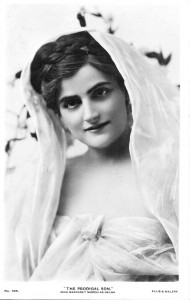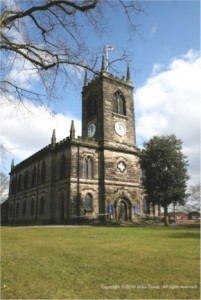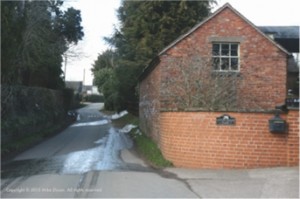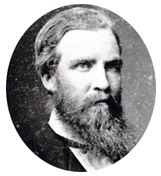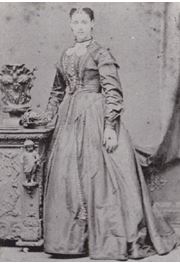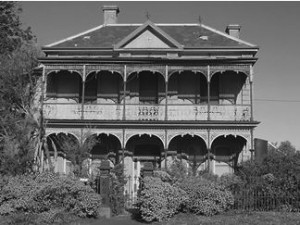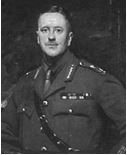(Unknown) Buller – St Olave Bermondsey
Around the end of December 2014 I decided to take on the 52 Ancestor Challenge looking at my 4x great grandparents as I had already proven all of my 3x great grandparents known to me. I knew a number of them fairly well because my parents talked about their ancestors many times when I was a child, plus my paternal grandfather lived with us and my maternal grandmother lived in the same city. Thus stories about my ancestors were often heard on a daily basis. Since three of my grandparents were born in England, and lived there into adulthood, that is the only way that I became familiar with my great grandparents and great great grandparents. My father was also born in England coming to Canada as a child of nine with his parents.
The choice of (Unknown) Buller for this particular 52 Ancestor Challenge was a novel thought. Initially, I had planned to leave him out of the Challenge since I really do not know anything about him, other than he “may” or “may not” have been the father of my 3x great grandfather – Christopher Buller. The “may not” could have occurred if Christopher was illegitimate, something of which I am still unaware of at this time of writing.
In 2013, I undertook some research at the London Metropolitan Archives, looking at one of the Parish Registers for St Olave Bermondsey not online at Ancestry.ca, but I wasn’t able to find a baptism for Christopher Buller although it was the same church in which he was buried. I then decided to follow a new path looking at this unknown 4x great grandfather. I know quite a bit about his son Christopher Buller, or Christy Buller as he was often referred to in various documents. Christopher was possibly born in London, or Greater London, but even that detail is hidden to me. I had found two burial records for a Christopher Buller – one at St Olave Bermondsey and the other at Saint Mary Magdalene Woolwich – and both in a time period to be my 3x great grandfather.
The first Christopher Buller died May 1832 at the Workhouse Infirmary in Bermondsey. This is not particularly unusual as there were hospitals in the Workhouses that people in the community used. I am not sure where he lived his last days but he is identified in the will of his step mother-in-law as living in Long Lane in Bermondsey in 1819. In this burial record for Christopher it states that he was 69 years of age when he died and the burial itself was at St Olave Bermondsey, 13 May 1832, thus giving him a possible birth year of 1763.
The second burial record for a Christopher Buller was at Bromley on 23 Nov 1839, and his age was listed as 82 in the burial record at St Peter and St Paul Woolwich, yielding a possible year of birth of 1757. I have the death certificate for this Christopher Buller and it states that he was 81 years of age and a decayed gentleman. It is possible that this certificate pertains to the Christopher Buller, married to a Jane (unknown), with sons Thomas Christopher and John Christopher. The baptisms for these two children were at Woolwich, Kent, where the Christopher Buller who died in 1839 was also buried. Thomas Christopher Buller was baptized 25 Sep 1814 at Saint Mary Magdalene Woolwich (although he was born at Charles Street, Bermondsey) and John Christopher Buller was born Jun 1819 at Woolwich and buried 21 Jul 1819 at St Mary Magdalene Woolwich. I believe I have managed to separate out these two burials and the second burial at Bromley is not my Christopher Buller since mine was living on Long Lane in Bermondsey in this time period.
Jane (Blakely) Beard, the step mother of Christopher Buller’s wife Mary (Beard) Buller, was buried 13 Jan 1819 at St Saviour Southwark having died at Crosby Row King Street Southwark. She had married Henry Beard, widower, on 8 Feb 1785 at St Mary Magdalen Bermondsey. My 3x great grandmother Mary was 18 years of age at the time of the marriage and her youngest sister Sarah was eight years of age. Their mother, Elizabeth (Hemsley) Buller, had been dead for about three and a half years at that time.

The author pointing to the area on Tooley Street, Bermondsey where Christopher Buller had his Slop Shop in the late 1700s and early 1800s. This is a set of large granite plaques in the walkway area under the London Bridge.
The will of Jane (Blakely) Beard mentions that Christy Buller was living at Long Lane in the Borough. We walked the length of Long Lane when we visited Bermondsey a couple of years ago. This area was heavily bombed and other than St Mary Magdalen Church there doesn't appear to be many buildings left from the 1800s. At the time of Jane’s death, Henry Christopher Buller (son of Christy Buller and Mary Beard) would have been 14 years of age. Also at that time, he had three sisters living: Martha Sarah who married George Caswell, 29 Oct 1831; Elizabeth Jane who married Edward Churchyard, 31 Oct 1827; and Emma Hemsley who married Isaac Debnan in 1827 at the Independent Church and again on 2 Jan 1840 at the Anglican church Saint Dunstan.
The forenames of these siblings may or may not be helpful in my pursuit of the father of Christopher Buller. However, Elizabeth Jane's forenames are the forenames of the two wives of Henry Beard. Obviously, in the case of my 2x great grandfather Henry Christopher, the forename Henry comes from Henry Beard and Christopher from Henry's father. A brother to Henry Christopher, who had died, was named Robert Hemsley/Hucksley and could this be from Mary Beard’s family? Emma Hemsley carries the surname of Henry Beard's first wife Elizabeth Hemsley but the Emma is a mystery. Martha Sarah I have not yet determined but could they be the forename(s) of Christopher's mother/grandmother etc? Looking for a Buller marrying a Martha or a Sarah has not yet been productive. But I shall try again as one of the points of doing this 52 Ancestor Challenge is to look once again at these particular individuals to see if anything new has appeared in the records or been missed in prior searches.
One interesting find was a transcription from Boyd's Marriage Index. It is the marriage in 1794 of Christopher Buller and Sarah Beard (actual name was Mary). The marriage was celebrated at All Hallows Barking. The records are not available online at Ancestry and were only deposited at London Metropolitan Archives recently. I know Christopher and Mary were married by September 1795 because they are mentioned in the will of Henry Beard dated 19 Sep 1795.
The first child of Christopher Buller and Mary Beard was Elizabeth Jane who was born 13 Feb 1796 while they were living at St Thomas Street in Bermondsey. By 1 Dec 1797, when Elizabeth Jane had died, the family were living at Charles Street in Bermondsey. One can note that I mentioned earlier that Thomas Christopher Buller (son of the other Christopher Buller) was born at Charles Street, Bermondsey. This is somewhat of a confusion but I think I have successfully separated out the two Christopher Bullers. It is perhaps just a coincidence that they lived on the same street but 16 years apart. Since I know the age of both of these Christopher Bullers, in as much as one can know the ages, my Christopher Buller was born circa 1763 and the other Christopher Buller buried at Bromley was born circa 1758. They are not likely brothers but they could be cousins.
The next child born was Martha Sarah on 16 Aug 1797 at St Thomas Street. The third child, Elizabeth Jane, once again, was born 26 Apr 1799 at St Thomas Street. Emma Hemsley was born 21 Jul 1800 but no address given. Henry Christy Buller was born 16 Oct 1803 at Tooley Street but died mid November 1803 – no street address given. Then followed the birth of my 2x great grandfather Henry Christopher Buller on 30 Jan 1805 at Bermondsey Street. The last child born to this couple was Robert Hemsley/Hucksley Buller on 6 Nov 1806 with no address given. He died and was buried 18 October 1807. His mother had died shortly following his birth (14 Dec 1806) and was buried at St Olave Bermondsey as was Robert. Christopher Buller was buried 13 May 1832 also at St Olave Bermondsey. These graves would have all been moved to Bunhill because the grave yard at St Olave Bermondsey was closed and moved during the building of the ramps for the London Bridge.
Looking again at the marriage of Christopher Buller and Sarah Beard at All Hallows Barking, it is easily within walking distance of Bermondsey. None of the Beard girls married in their home parish (all run-away marriages?). I have had a glimpse of the Beard girls in the marriages that they made and they appear throughout their lives to have been comfortable for the times. They all left descendants with most remaining in England but a few ventured off to Canada, the United States, South Africa and Australia. Until my grandmother arrived in Canada her line had remained in England.

All of the children of my great grandfather Edwin Denner Buller. My grandmother is the first on the right and they are in decreasing order of birth. All of these pictures were taken in the 1916 to 1917 time period and I have produced the resultant image.
London was always a mix of people. I consider that my Buller family may have had links with Birmingham because Henry (Christopher’s son) appears there by 1837 as a provision dealer and then a restaurant owner on Bull Street. His first wife had died in 1836 in Lambeth and a daughter had died in the Covent Garden area in 1835, so one thinks perhaps they moved to Lambeth for better air. A son George had also died as an infant in the Covent Garden area. Henry continued to have a pork butcher shop in Covent Garden as he and his second wife lived there for about ten years although they travelled back and forth between London and Birmingham where Ann's father was a restaurant owner. They were part of the slowly growing middle class of store owners in that time period.
But still Christopher Buller eludes me in terms of his parentage. I cannot find in the large Buller families in London a Christopher Buller although while researching at the London Metropolitan Archives (as mentioned the registers for St Olave from 1731 to 1778 are not on Ancestry) there was another Buller family at St Olave Bermondsey but their children did not include a Christopher and they were baptizing children in this time period.
The other item that comes to mind for the parents of Christopher Buller is the many emigrants to London from the Continent, particularly in the time of the King George’s of England. Many people came from the Germanic States and particularly in the confectionary industry. Eventually my Henry Christopher Buller also became involved in the confectionary industry. Is that a link that is significant? Add to that my atDNA results which, for me, show a northern continental European component both at Family Search and at Ancestry. Is that what is showing up for me – a German component? Is my Christopher Buller the son of a German emigrant at least on his mother's side? Christopher is not a common forename in the Buller family. Perhaps his name is not Buller after all but Buhler or some other similar Germanic surname.
There are twelve results on Find My Past for a Christopher Buller born between 1723 and 1853. The first record is the burial of Christopher Buller at Bromley, Kent. The second is the Westminster Rate Books in 1786 for a Christopher Buller living at Cross Street South, St James Piccadilly. The third is the entry in Boyd's marriage index of the marriage of Christopher Buller and Sarah Beard at All Hallows Barking in 1794. The fourth is another listing in the Westminster rate books at Cross Street South, St James Piccadilly in 1806. The fifth is a listing in the Westminster rate books again at Cross St South, St James Piccadilly. Numbers six and seven are a repeat of number 5 except Carnaby Street South, St James Piccadilly. Number eight is the death registration for Christopher Buller at Bromley, Kent. Number nine is the marriage of Christopher Buller in 1856 at Clitheroe, Lancashire. Number ten is the marriage of Henry Christopher Buller in 1838 and Ann Welch (my 2x great grandparents) at Kings Norton, Worcestershire. The eleventh is the marriage of John Christopher Buller in 1865 at Bermondsey. The twelfth is the marriage of John Christopher Buller in 1875 at St Olave Southwark.
Am I further ahead with the father of Christopher Buller? Perhaps, an answer from London Metropolitan Archives might just provide me with something to further my research. Finding this item on Boyd's Marriage Index is certainly a step forward in that search. Has it crossed my mind that he could be illegitimate? Absolutely, but I did not find any Buller lines at St Olave Bermondsey that would have worked to have a Buller female having a child in that time frame (nor at St Mary Magdalen Bermondsey where he and his family worshiped). I have not found any illegitimate Christopher Buller children born in the London area in this time period so far. Who was the Christopher Buller living at Cross Street South, St James Piccadilly in 1786 and 1806? This is an area where the known Buller family of London was living. How does Christopher fit into this family or does he? The Christopher Buller living in 1786 could possibly be my Christopher Buller because he would be about 23 years of age but he could also be the other Christopher Buller who would have been 29 years of age. Interestingly, my 2x great grandfather was visiting in this same area when he died in 1862 (the home of Sarah Barnett who had been born in Staffordshire). I continue working on that possible connection.
Ancestry of (unknown) Buller:
1. Myself
2. Helen Louise PINCOMBE (b 18 Oct 1916) – Westminster Township, Middlesex County, Ontario, Canada
3. Ellen Rosina BULLER (b 20 May 1886) – Birmingham, Warwickshire, England
4. Edwin Denner BULLER (b 8 Apr 1850) – Birmingham, Warwickshire, England
5. Henry Christopher BULLER (b 30 Jan 1805) – Bermondsey, Surrey, England
6. Christopher BULLER (b c1763)
7. Unknown
Elizabeth Kipp, PLCGS
Member 1004
